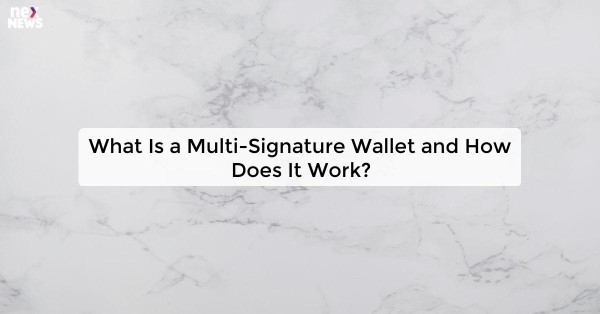Multi-Signature Wallet Overview
Multi-signature wallets, also known as multisig wallets, are a type of digital wallet that requires multiple private keys to authorize a cryptocurrency transaction. This added layer of security makes multisig wallets an attractive option for those looking to safeguard their digital assets from unauthorized access or theft. By distributing the signing power among multiple parties, multisig wallets reduce the risk of a single point of failure in the event of a compromised key.
In a multisig wallet setup, a predetermined number of signatures are required to validate a transaction, typically involving two or more parties who hold different private keys. This collaborative approach enhances the security of funds stored in the wallet, as all parties must consent to a transaction before it can be executed. As such, multisig wallets are commonly used by organizations, businesses, and individuals seeking to mitigate the risks associated with single-key wallets.
How Multi-Signature Wallets Enhance Security
Multi-signature wallets enhance security by requiring multiple private keys to authorize transactions. This means that in order to send funds from a multi-signature wallet, multiple parties must provide their consent, making it more difficult for unauthorized individuals to access and manipulate the funds. The use of multiple signatures adds an extra layer of protection against potential security breaches, as it significantly decreases the risk of a single point of failure compromising the entire wallet.
Moreover, multi-signature wallets provide users with greater control and oversight over their digital assets. By requiring multiple signatures to approve transactions, users can collaborate with trusted individuals or entities to manage and secure their funds. This feature is especially beneficial for businesses and organizations that require multiple approvals for financial transactions, as it ensures that no single party has unilateral control over the funds in the wallet.
The Role of Multiple Signatures in Transactions
In the world of cryptocurrency transactions, the role of multiple signatures is paramount in ensuring a higher level of security and trust. By requiring more than one signature to authorize a transaction, multi-signature wallets add an extra layer of protection against unauthorized access and fraudulent activities. This feature provides users with greater control over their funds and minimizes the risk of potential security breaches.
Moreover, the use of multiple signatures serves as a safeguard against any single point of failure within the transaction process. In a multi-signature setup, each party involved in the transaction must provide their unique signature to approve the transfer of funds, making it significantly more difficult for malicious third parties to exploit vulnerabilities and carry out unauthorized transactions. This decentralized approach to verifying transactions not only enhances the overall security of digital asset management but also contributes to the resilience and reliability of blockchain technology.
Key Features of Multi-Signature Wallets
Multi-signature wallets offer a unique feature where multiple signatures are required to authorize a transaction. This added layer of security ensures that no single party has full control over the funds held in the wallet. Each transaction must be approved by the designated number of signatories before it can be executed, providing a safeguard against unauthorized access or fraudulent activities.
Moreover, multi-signature wallets allow for increased trust and accountability among the parties involved in the transaction. By requiring consensus from multiple signatories, the risk of a single party acting maliciously or making unauthorized transactions is significantly reduced. This feature is particularly beneficial in business settings where multiple stakeholders may be involved in managing assets or funds within the wallet.
Setting Up a Multi-Signature Wallet
To set up a multi-signature wallet, the first step involves choosing a suitable service provider that supports this type of wallet. Research and compare different multi-signature wallet providers to find one that aligns with your security and accessibility needs. Once you have selected a service, proceed with creating an account by following the provider's registration process.
Upon successful registration, you will need to generate the required number of keys for the multi-signature wallet. Typically, this involves creating multiple private keys that are distributed among the designated signatories. Each individual with a key will play a role in authorizing transactions from the wallet, adding an extra layer of security to the process. Make sure to securely store these keys in different locations to prevent single points of failure.
